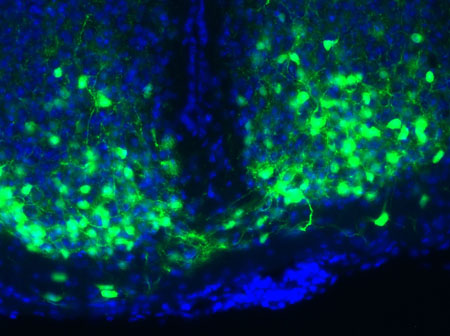
Our biological clocks play a large part in influencing our sleep patterns, hormone levels, body temperature and appetite. A small molecule called VIP, shown in green, enables time-keeping neurons in the brain’s central clock to coordinate daily rhythms. New research shows that, at least in mice, higher doses of the molecule can cause neurons to get out of synch. By desynchronizing mouse neurons with an extra burst of VIP, Erik Herzog of Washington University in St. Louis found that the cells could better adapt to abrupt changes in light (day)-dark (night) cycles. The finding could one day lead to a method to reduce jet lag recovery times and help shift workers better adjust to schedule changes.
Learn more:
Washington University in St. Louis News Release
Circadian Rhythms Fact Sheet
Tick Tock: New Clues About Biological Clocks and Health Article from Inside Life Science
A Light on Life’s Rhythms Article from Findings Magazine

